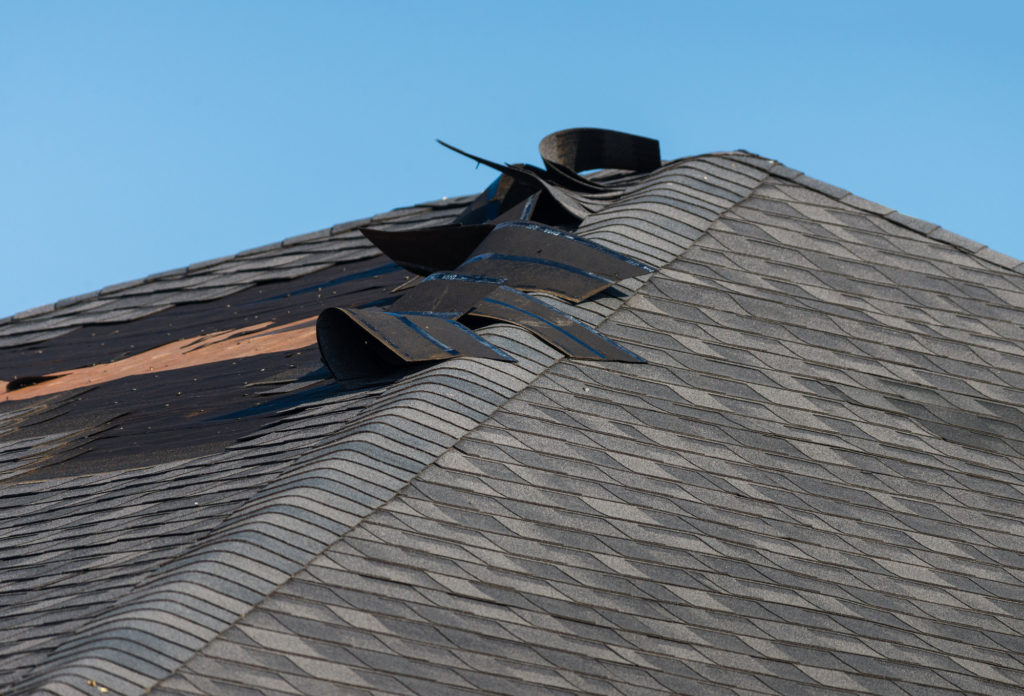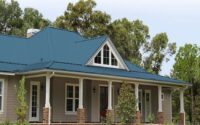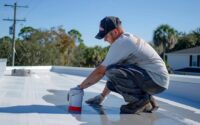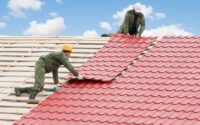These Are the Signs You Need a New Roof
A reliable roof is a key part of any home. It helps you stay warm, protects you from snow and rain, and safeguards you from the outside world.
One way to make sure a roof stays reliable is to inspect it regularly. Unfortunately, many homeowners don’t think about their roofs until they notice something wrong. Oftentimes, that “something” involves water pouring in through the ceiling.

The good news: acting ASAP may still save you from more expensive repairs down the road. Here are six telltale signs you need a new roof.
Roof Leaks
Roof leaks are most likely to originate in your attic. The best way to check for them is to go up to the attic after rainfall and look for signs of water intrusion.
You should also inspect the outside of your roof for ice dams. These form when the snow on your roof melts, slides down to the eaves, and freezes up again. When water comes into contact with an ice dam, it may get under the roof’s shingles.
If the leaks aren’t confined to a single area, you’re more likely to need a roof replacement. Either way, you should get a professional to inspect the roof first.
Most reliable roofing companies offer affordable inspections:
Roof Rot
When it comes to signs of roof damage, roof rot is the most dangerous one. This is a common indicator of serious structural issues.
Roof rot may occur when wood gets exposed to moisture for a prolonged time. This leads to the growth of fungus, which helps deteriorate a structure. Here are some of the most common signs of roof rot.
- Damaged Flashing
If you have binoculars, use them to look at your roof from the ground. Do you notice any tears in the flashing or gaps in the shingles? If you do, your underlying roof deck is in danger of rotting. Have the professional fix the issue right away.
- Sunken Roof Deck
Is there a sag or saddleback in the ridge of your roof? This can mean that your roof support studs and beams are currently experiencing rot. Your roof may also sag from too much snow, poor materials, or incorrect installation.
- Ceiling Water Damage
If you have water coming into your home, your roof is the most likely culprit. Check the ceiling for water stains, which are a common reaction to roof leaks.
Poor Energy Efficiency
Are you noticing a steady increase in your heating and energy bills? If so, you may be dealing with a roof that’s not insulated properly.
A badly insulated roof makes it much easier for air to go out and come in. During the winter months, this can lead to a significant uptick in energy bills. Instead of focusing on insulating your doors and windows, give some of that attention to the roof.
Cracked Shingles
The number one cause of cracked shingles is wind damage. If only a few of the shingles have cracks, the most practical solution is to replace them.
If you haven’t been paying much attention to your roof, the situation may be more serious. For example, you might notice randomly dispersed cracks all over the roof. In this case, you should replace the entire roof within the next three to five years.
The best way to check for cracks is to go to your attic and turn the light off. If you see light coming in from the roof, that’s a surefire sign of holes or cracks. Have a professional figure out whether you’ll need a new roof.
Roof Growth
Mold or mildew growth can also be an indicator of a leaky roof. That said, this may be a simple plumbing or condensation issue as well.
Before repairing your roof, make sure that your home is adequately ventilated. While you’re at it, confirm that your insulation is dry and your plumbing lines aren’t leaking. Once you’re done, determine which of these growths you’re dealing with.
- Mold
Unlike moss or algae, mold offers no aesthetic value and can cause health issues. You can identify it by its foul odor and brown, black, or dark-green blotches. Mold is most likely to grow on wood, drywall, and other surfaces that can absorb water.
- Mildew
Mildew has a powdery texture and can be gray, white, or yellow. If you’re exposed to it for a prolonged time, it can be dangerous. It spreads faster than other growths. It’s most often found on roofs with inadequate drainage.
- Algae
Roof algae tend to have a black-green hue. It’s most likely to develop in gutters due to the water that’s present there. It can also grow on the roof itself, especially in damp and humid climates.
- Moss
With its fuzzy texture and forest-green color, moss can look attractive on a roof. Depending on your design scheme, though, it can also be detrimental. Moss brings more moisture with it as it spreads, which can cause roof rot.
Old Age
Does your roof have asphalt shingles? Is it older than 20 years? If so, it may be time to start looking into new roof pricing.
Under ideal conditions, most 3-tab shingles last only around 25 years. Even if you haven’t noticed any of the above warning signs, old age is enough of a concern. If your roof is nearing the end of its lifespan, you’ll want to keep a close eye on it.
Of course, other roofing materials tend to have longer lifespans. For instance, wood shingles tend to last 30 to 40 years. Clay tiles can last 50 years or even longer. Slate is the most timeless material of all, lasting for 100 years or more.
More on Signs You Need a New Roof
Replacing a roof isn’t an easy decision, but sometimes there’s no other choice.
If you decide on getting a new roof, consider how long it will take. That depends on the size of your home, roofing material, method of replacement, and so on. This is important since you likely won’t be able to stay in the house during the process.
Interested in other signs you need a new roof? Want to know more about roofing maintenance techniques? Check out our Roofing section!



